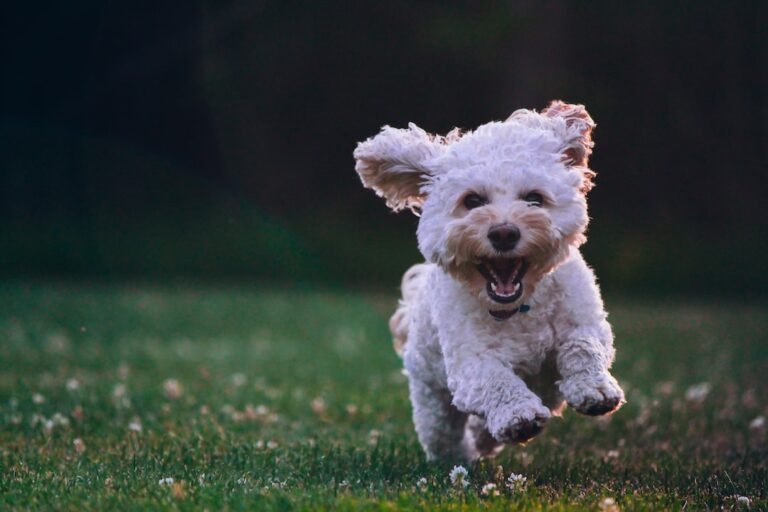Introduction
Obedience training is an essential part of owning a dog, and it is particularly important for dog owners in Tampa. Training your dog not only helps to ensure their safety and the safety of others, but it also strengthens the bond between you and your furry friend. In this blog post, we will explore the different aspects of obedience training for dogs in Tampa, including understanding your dog’s behavior, positive reinforcement techniques, establishing a routine, the power of patience, socialization, teaching basic commands, addressing problem behaviors, using training tools, and continuing education.
Understanding Your Dog’s Behavior: The First Step to Successful Training
Before you can effectively train your dog, it is crucial to understand their behavior. Dogs communicate through body language and vocalizations, and by observing and interpreting these signals, you can gain insight into their emotions and intentions. For example, a wagging tail can indicate happiness or excitement, while a tucked tail may signal fear or anxiety. Similarly, growling or barking can be a sign of aggression or discomfort. By paying attention to these cues, you can better understand your dog’s needs and tailor your training approach accordingly.
Positive Reinforcement Techniques: Rewarding Good Behavior
Positive reinforcement is a highly effective training technique that involves rewarding your dog for exhibiting desired behaviors. This approach focuses on praising and rewarding your dog when they do something right, rather than punishing them for doing something wrong. By using positive reinforcement, you can motivate your dog to repeat the behaviors you want to see more of. Rewards can include treats, praise, toys, or even playtime. The key is to make the reward something that your dog finds valuable and enjoyable. By consistently rewarding good behavior, you can reinforce positive habits and strengthen the bond between you and your dog.
Consistency is Key: Establishing a Routine for Your Dog
Consistency is crucial when it comes to training your dog. Dogs thrive on routine and predictability, so it is important to establish a consistent training schedule. This means setting aside dedicated time each day for training sessions and sticking to it. Consistency also applies to the commands and cues you use during training. For example, if you use the word “sit” to command your dog to sit, it is important to always use that same word and not switch to “sit down” or “take a seat.” By being consistent in your training approach, you can help your dog understand what is expected of them and make the learning process more efficient.
The Power of Patience: Taking Your Time with Training
Patience is a virtue when it comes to training your dog. Dogs learn at their own pace, and it is important to give them the time they need to understand and master new commands or behaviors. It is also important to remember that training is a continuous process and that your dog may have good days and bad days. It is essential to stay patient and avoid getting frustrated or angry during training sessions. Dogs are highly attuned to their owner’s emotions, and if they sense frustration or anger, it can hinder their learning and damage the trust between you. By staying patient and positive, you can create a supportive and encouraging environment for your dog to learn and grow.
Socialization: Helping Your Dog Interact with Other Dogs and People
Socialization is a critical aspect of training for dogs in Tampa. It involves exposing your dog to different environments, people, and other animals in a controlled and positive way. Socialization helps your dog become comfortable and confident in various situations, reducing the likelihood of fear or aggression. To socialize your dog, start by introducing them to new people and animals gradually. Use treats and praise to reward calm and friendly behavior. It is also important to expose your dog to different environments, such as parks or busy streets, to help them become accustomed to different sights, sounds, and smells. By socializing your dog, you can help them become a well-rounded and well-behaved member of the community.
Teaching Basic Commands: Sit, Stay, Come, and More
Teaching your dog basic commands is an essential part of obedience training. These commands provide the foundation for more advanced training and help to keep your dog safe in various situations. To teach your dog basic commands, start with one command at a time. Use a clear and consistent verbal cue, such as “sit” or “stay,” and pair it with a hand signal if desired. Use positive reinforcement techniques, such as treats or praise, to reward your dog when they successfully perform the command. Be patient and repeat the command and reward process until your dog understands and consistently responds to the command. Once your dog has mastered one command, you can move on to the next.
Addressing Problem Behaviors: Barking, Jumping, and Chewing
Problem behaviors, such as excessive barking, jumping, or chewing, can be frustrating for dog owners. However, it is important to address these behaviors in a positive and constructive way. Punishment or harsh methods can lead to fear or aggression in your dog and may worsen the problem behavior. Instead, use positive reinforcement techniques to discourage problem behaviors. For example, if your dog barks excessively, teach them the “quiet” command and reward them when they stop barking. If your dog jumps on people, teach them the “off” command and reward them when they keep all four paws on the ground. By using positive reinforcement, you can redirect your dog’s behavior and encourage more desirable actions.
Using Training Tools: Collars, Leashes, and Clickers
Training tools can be helpful aids in obedience training. Collars and leashes provide control and safety during walks and can be used to reinforce commands. For example, a gentle tug on the leash can be used to guide your dog into a sit position. Clickers are another useful tool that can be used to mark desired behaviors and communicate with your dog. When your dog performs a desired behavior, such as sitting, you can use the clicker to make a distinct sound, followed by a reward. This helps your dog understand which behaviors are being rewarded and reinforces the association between the behavior and the reward.
Continuing Education: Maintaining Your Dog’s Training Progress Over Time
Training is not a one-time event but an ongoing process. It is important to continue your dog’s education and maintain their training progress over time. This can be done by regularly practicing commands and behaviors, even after your dog has mastered them. It is also beneficial to introduce new challenges and commands to keep your dog mentally stimulated and engaged. Additionally, attending obedience classes or working with a professional trainer can provide valuable guidance and support in maintaining your dog’s training progress. By continuing your dog’s education, you can ensure that they remain well-behaved and obedient throughout their lives.
Conclusion
Obedience training is a vital aspect of owning a dog in Tampa. By understanding your dog’s behavior, using positive reinforcement techniques, establishing a routine, practicing patience, socializing your dog, teaching basic commands, addressing problem behaviors, using training tools effectively, and continuing your dog’s education, you can create a well-behaved and happy canine companion. Remember to always approach training with love, patience, and consistency, and enjoy the journey of strengthening the bond between you and your furry friend.
If you’re looking for more information on dog obedience training in Tampa, you may also be interested in our article on pet allergies. Understanding and managing pet allergies is crucial for creating a safe and comfortable environment for both you and your furry friend. Check out our article on pet allergies to learn more about common allergens, symptoms, and effective strategies for allergy management.




